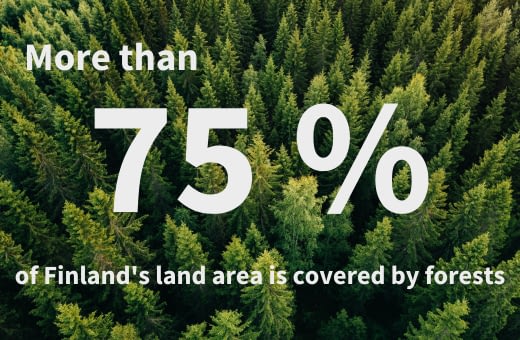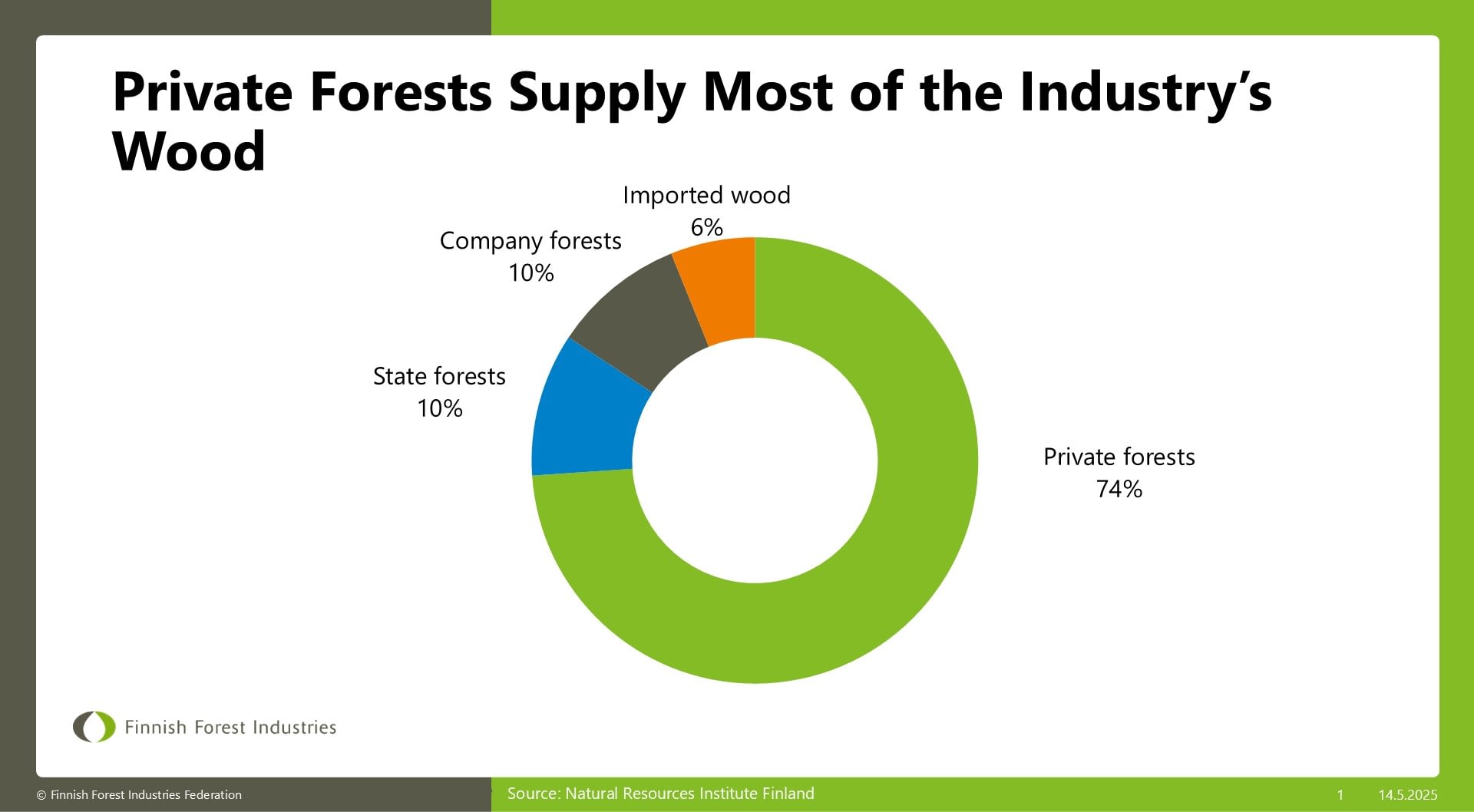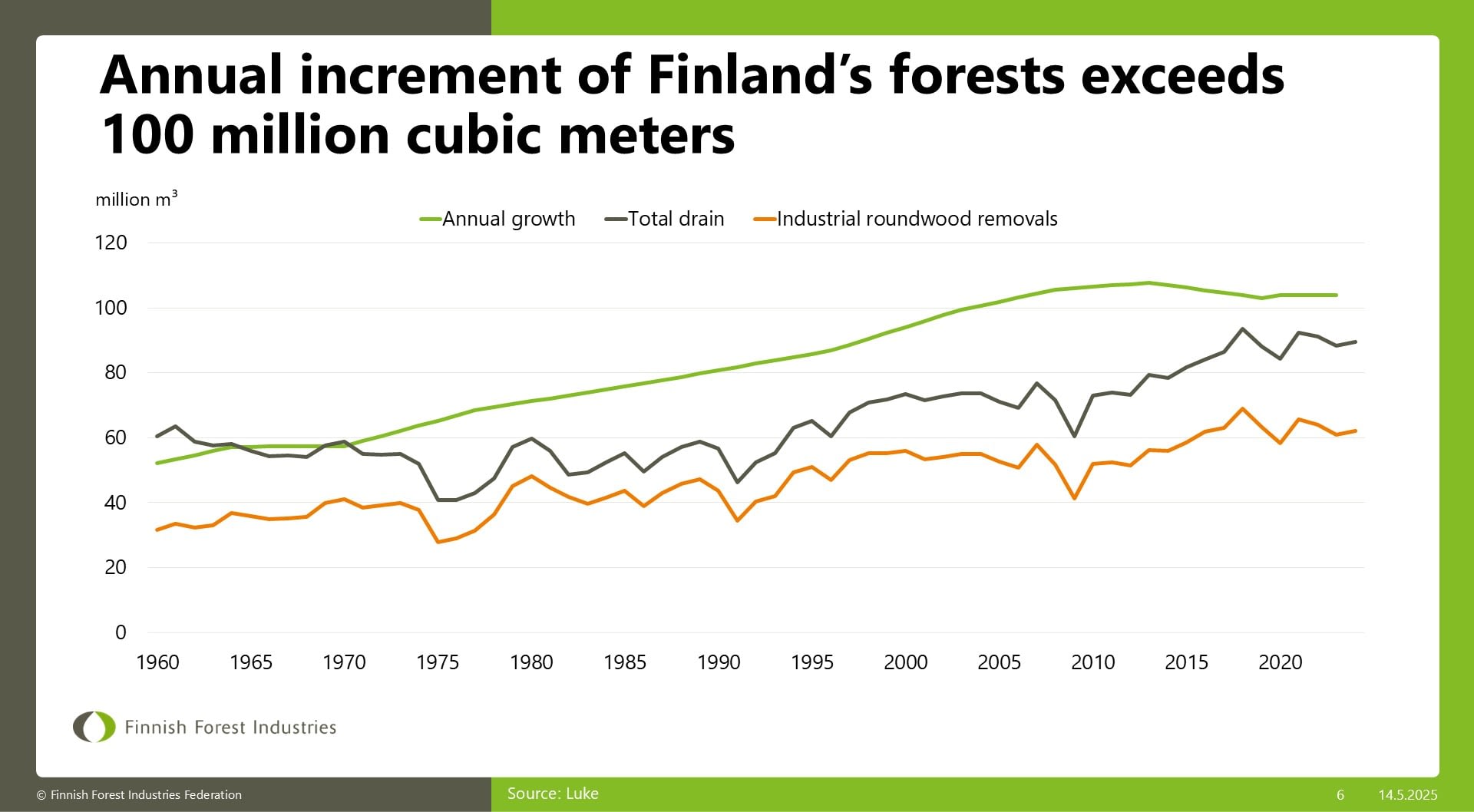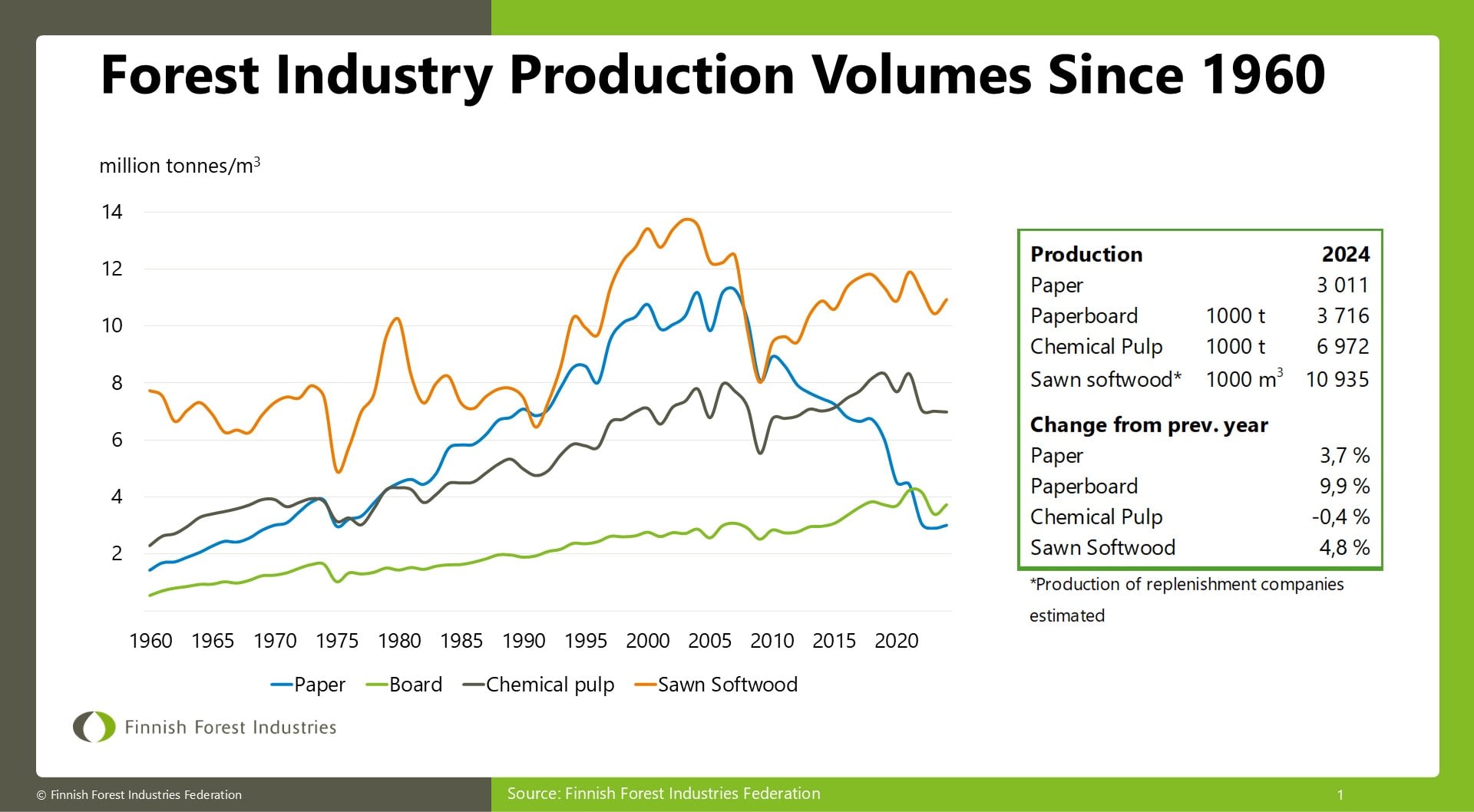Finland is the most heavily forested country in the EU. More than 75% of Finland’s land area is covered by forests. The annual growth of forests exceeds the harvested volumes. In 2022, about 72 % of the annual growth was harvested. This means that our forest resources are accumulating continuously. In fact, the growing stock in Finnish forests has increased from 1,5 billion cubic meters to 2,5 billion cubic meters during the last 50 years.
Active and timely forest management keeps the forests viable and in good growth. When forests are managed well, the forests can be used for production on different wood-based products while strengthening their carbon storage and the biodiversity of forest nature.
The dominating tree species in Finnish forests are spruce, pine and birch. All of those are native tree species in our country.
Over half of the forests are owned by private forest owners
Most Finnish forests belong to non-industrial private forest owners who retain 60% of the forests. Twenty-six percent of the forests is state-owned. Companies own 9% and other entities 5% of the productive forest land.
About 80% of domestic wood utilised by the forest industry comes from private forest owners.
The average size of the forest holding is 30 hectares, and the number of forest owners is approximately 630 000.
The Finnish forests are well-known
Information is the basis for decision-making in forest management and forest policy. The Finnish National Forest Inventory is a system for monitoring forests and forest resources. The information is produced both regionally and nationally. The number of parameters to measure has been continuously increasing. Forest inventories have been conducted every 5 to 10 years since the 1920s.
Forest resource information is also collected using a method that utilizes sample plot measurements, laser scanning from an aircraft, and aerial photography. Finland’s second comprehensive laser scanning has been ongoing for six years, and the last areas will be scanned in 2025.
A commercial forest is a multiple-use forest
The availability of raw wood materials is the fundamental prerequisite for the forest industry’s existence. The successful forest industry produces tax and export revenues for Finland and facilitates new environmentally friendly investments. Together, active forest management and wood-based products sustainably strengthen Finland’s economy and provide employment throughout Finland.
Finnish commercial forests not only produce wood but also offer numerous other benefits and commodities. Wood production, the development of carbon storage, the promotion of biodiversity and recreational values are all integral to sustainable forestry.
Nature management in commercial forests is part of everyday forestry. It helps promote the biodiversity of forests. Active and timely forest management secures the availability of domestic wood raw material, prevents forest damage and, at the same time, promotes the accumulation of our forest resources and maintains the carbon storage of forests.
Sustainability in Finnish forests
Protected forests and forests under restricted use cover 13% of the area suitable for wood production. The share of strictly protected forests is the highest in the EU, 10% of the total area of forests.
Almost 93% of Finnish forests in commercial use are certified under global forest certification schemes FSc and PEFC. In addition, Best Practice Guidelines for sustainable forestry that are based on national research on forests provide extra tools to sustainable forest management over requirements of the legislation, including biomass harvesting for bioenergy production. The guidelines have been successfully implemented to private forestry.






